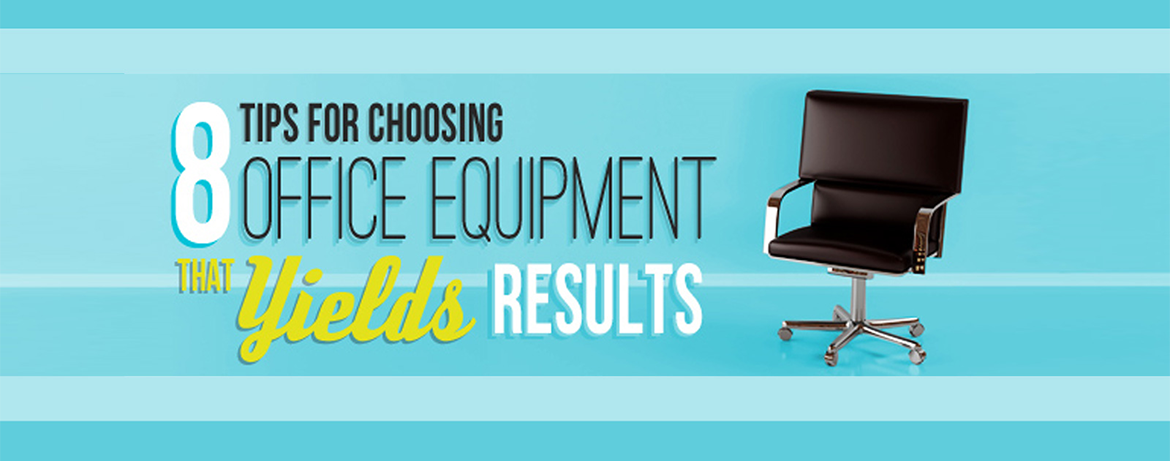
8 Tips for Choosing Office Equipment that Yields Results
For businesses that are just starting out, a large portion of the initial investment goes to the purchasing of office equipment. These are essential to the company’s daily operations and are hence a necessary component. But when they malfunction or become damaged, a lot of time is invested in troubleshooting and diagnostics. On-site repairs and unnecessary waiting for unavailable replacement parts can also be a hassle.
This is why it is important to choose office equipment that will aid your business and not hinder it. Here are some tips that can help you make the decision process that much easier:
Tip 1: Get at least 3 quotations from 3 separate suppliers.
You will be able to negotiate more effectively if you know the approximate market rate for the equipment you want. Also try asking for a package deal if you are buying two or more sets as the vendor might be more willing to give you a better price in such a case.
Tip 2: Maximize the business service agreement or warranty.
Like any piece of technology, there is always the possibility of your office equipment malfunctioning. But by having a good service agreement that covers these issues and more, the repairing or replacement process can be a relatively hassle-free one, which can save the company time and money.
Tip 3: Consider ergonomic equipment.
Many commonly used office equipment now come with ergonomic designs that make using them more comfortable and hence increases employee productivity. Some of these include keyboards that minimise wrist strain, glare-reducing computer screens that prevent eye strain, and adjustable tables and chairs that promote good posture.
Tip 4: Opt for machines with reliable safety standards.
Office equipment should not have exposed parts that can cause electrical or mechanical injuries. The products must be tested and contain a seal signifying high quality control standards. Specifically for machines that do repetitive tasks, make sure these are not prone to overheating or damage during an electrical outage.
Tip 5: Look at the equipment’s overall cost of operation.
Cheaper equipment may look the better deal initially, but this may not be the case when you calculate their long-term operational cost. Do factor in the cost of the machine’s supplies as this could easily offset any savings made during the initial purchase.
Tip 6: Consider the environmental impact.
Because of pollution and other environmental concerns, manufacturing companies have focused their attention towards producing environmental-friendly office equipment. This can form part of your company’s drive to becoming more green in its operations.
Tip 7: Request for full demonstration.
Purchased equipment should be installed with the specifications of the manufacturer, and by a licensed technician. Allow them to demonstrate the full capability of the equipment and how it can help your daily processes.
Tip 8: Think beyond employee output.
Some organisations may be able to offer tie-ups or networking prospects with the use or promotion of their products. Especially in an economic slowdown, some businesses are looking into collaboration as a means of diversifying their services and at the same time reaching a broader target audience, as compared to being constrained to cost-control measures.
